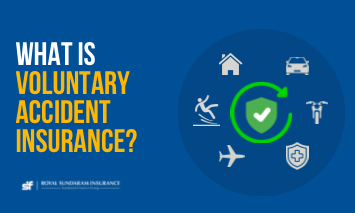RTO Number Plate Rules
Mar 28, 2025 • 3 Min Read
Every vehicle on the road bears a unique identity, i.e., vehicle license plate (commonly known as a "number plate"), which is issued by the regional transport offices (RTOs) across the state.
But have you ever wondered about the rules and regulations governing these plates? From design to display, there are specific guidelines set by the RTOs that every vehicle owner must follow.
In this blog, we are going to discuss RTO number plate rules and understand their significance.
Understanding RTO Regulations
RTOs operate under the Ministry of Road Transport and Highways. The regulations set by them regarding number plates serve significant purposes and are designed to address crucial needs in vehicle identification and management on the roads.
From minor traffic violations to serious crimes, law enforcement agencies heavily rely on number plates to identify vehicles.
Importance of Adhering to RTO Guidelines
Now, as a responsible Indian citizen, let's understand the importance of adhering to RTO guidelines.
- First up, it's all about safety. Clear and easy-to-read number plates help cops and other emergency responders identify vehicles quickly.
- The RTO guidelines are not just suggestions; they're the law. If you don't adhere to them, you could end up facing fines or even legal trouble.
- Adhering to these rules facilitates accurate tracking of vehicle ownership. Each vehicle's number plate serves as a unique identifier, which makes it easier for authorities to maintain records and prevent fraudulent activities such as vehicle theft or tampering.
- Lastly, compliance with RTO number plate rules promotes uniformity and standardization across vehicles; having everyone follow the same rules makes the process much smoother.
Components of RTO Number Plates
Below are the details of RTO number plates components:
- Part 1: Two-letter State Codes: At the very beginning of the number plate, there are two letters indicating the State or Union Territory for which the vehicle is registered. For instance, "TN" for Tamil Nadu, "RJ" for Rajasthan, etc.
- Part 2: District Number: Following the state letters, the next two digits represent the sequential number of the district where the vehicle was registered.
- Part 3: Single or Multiple Letters: Next up, you might see one, two, or three letters, or sometimes no letters at all. These serve as the ongoing series of registrations at the respective RTO office and help track the number of registered vehicles.
- Part 4: Unique Number Ranging Between 1 and 9999: Finally, there's a unique number between 1 and 9999, issued sequentially and is unique to each registration.
Types of Number Plates as Per RTO Standards
The Regional Transport Offices (RTOs) have established various types of number plates to categorize vehicles based on special considerations.
| Number Plate Type | Specification |
|---|---|
| White | Private or non-commercial cars |
| Green | Electric vehicles |
| Blue | Used by foreign diplomats United Nations (UN), Diplomatic Corps (CD) or Consular Corps (CC). |
| Yellow | Commercial vehicles like taxis, cabs, and trucks |
| Black | Self-rental vehicles |
| Red | Used as a temporary registration for a brand-new vehicle until permanent registration is done. |
| Red with India’s Emblem | Used as Official vehicles of the President of India, Vice President of India, and other high-ranking government officials. |
| Number plate with an upward-pointing arrow | Military vehicles |
No matter the type of RTO number plate you use, the registration number must be displayed on the HSRP (High-Security Registration Plate).
But what is HSRP?
As per the Central Motor Vehicle Rules, 1989, all vehicles registered after April 1, 2019, must have a High Security Registration Plate. These are made of aluminium with a unique laser-etched code below the IND and the Ashoka Chakra hologram. (as shown below)

Source : (This image is taken under Creative Commons licenses)
Guidelines for Number Plate Design and Display
The design and display of number plates are subject to specific guidelines set by the RTOs. Here are some of those rules!
- Fancy lettering on the bike or car number plate, as per RTO rules, is strictly prohibited. It should only be in Arabic numerals with Latin letters.
- The size of the letters must adhere to specified dimensions based on the vehicle category, as mandated by the RTO.
- It is illegal to drive a newly purchased motor vehicle without temporary plates.
- Ensure it is affixed on the right side at a height of about 1 meter from the ground.
- The number plate must always be displayed on both the front and rear sides of your vehicle.
- For transport vehicles, the registration numbers should be on both the left and right sides of the vehicle.
Registration Process and Documentation
Here's a simplified guide to the number plate registration process:
1. Visit the official RTO website of your state.
2. Fill in your basic details, such as your
- Name
- Address
- Vehicle registration number
- Chassis number
- Contact details, etc.
3. Choose the type of vehicle you have, whether it's for personal use (non-transport) or commercial use (transport).
4. Complete the online payment process securely and make sure to download or print the acknowledgement receipt for your records.
5. Wait for a notification that the HSRP has been dispatched and is on its way to you.
Disclaimer: These steps may not be applicable in all states. In such cases, you can visit your local RTO office or an authorized dealer.
Common Mistakes to Avoid
- Make sure all the details you give, like your car's engine number or your address, are correct.
- There are deadlines for getting the number plate, as per RTO rules. Don't miss them or otherwise, you may have to pay penalties as applicable.
- When you're filling out forms online, make sure you're on the official site and your personal information is safe.
- If you move to a new place or sell your car, you need to update the registration.
Conclusion
When driving vehicles, it's vital to follow all the government rules and regulations. This is not just for avoiding trouble with fines, but also for ensuring security.
And while you're at it, consider protecting your vehicle and your future further. Check out car insurance and two-wheeler insurance options at Royal Sundaram for that extra layer of safety.



Discover the perfect insurance plan for you!
Get your free quote now!
Get StartedBy Clicking on Get Started, You agree to our Terms and Conditions and override DNC/NDNC registration.
More like this
View more





